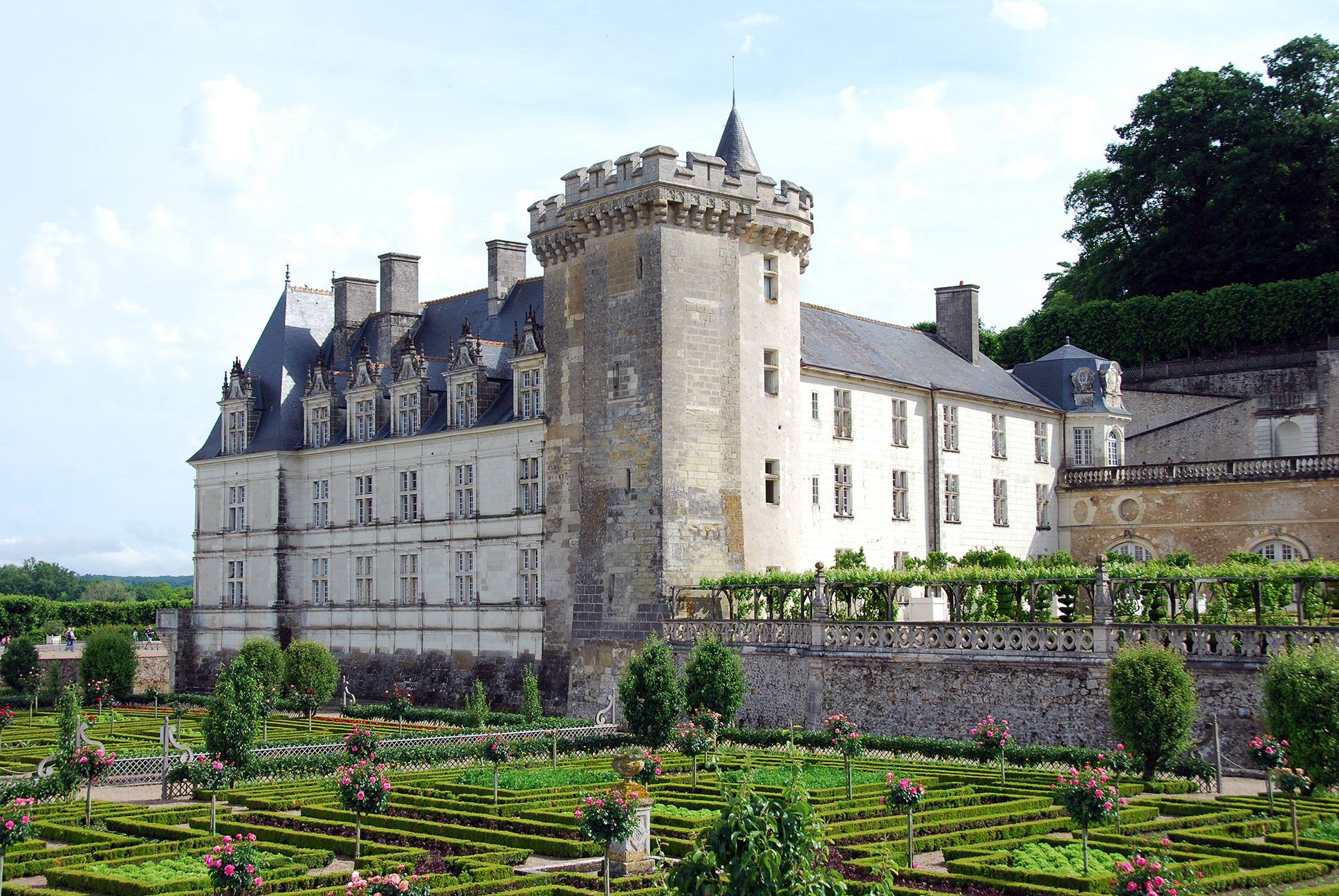History
Built around 1536, Château de Villandry was the last grand château constructed along the River Loire during the Renaissance. The castle was built by Jean Le Breton, Minister of Finance under King Francis I, on the site of an old 12th century fortress, from which only the keep remains. In this original fortress, "la Paix de Colombiers" was signed on July 4th, 1189, when King Henry II of England came to admit defeat before King Philippe-Auguste of France.

In place of the medieval fortress, Jean Le Breton built three central buildings next to the keep, forming an open horseshoe plan overlooking the valley with the Rivers Cher and Loire flowing past. Though close to other Renaissance castles like Azay-le-Rideau, built around the same time, Villandry was constructed without the Italian influences, medieval turrets, or machicolations, giving way to a more straightforward pure French style that would later become the style of Henri IV.
In 1754, Château de Villandry was purchased by the Marquis de Castellane, the King's ambassador, who hailed from an old and noble family from Provence. He added outbuildings, the orangeries, and the terraces. He also rounded the Renaissance windows, added windows in the Louis XV style, and decorated them with balconies and balustrades. The Marquis also redesigned the castle's interior, making it more inhabitable and adding comforts close to those we enjoy today. Villandry had a series of owners from 1791, including Jerome Bonaparte, who was given the castle by his brother Emperor Napoleon, who acquired the castle during the French Revolution.
In 1906, Villandry was bought by Joachim Carvallo, who, with the help of 100 builders, restored the Renaissance beauty of the castle's façade. He also restored the Renaissance gardens. In 1924, Joachim Carvallo founded the "Demeure Historique," the first association to group owners of historic residences that pioneered the opening of monuments to the public.
Château de Villandry remains home to the Carvallo family, whose grandson Henri Carvallo is the current owner and director of the castle.
Castle Highlights
Château de Villandry is a beautiful castle to visit. Its formal Renaissance gardens are the main attraction, with multiple gardens laid out in seven different sections and viewable from the terraces. The Vegetable Garden is divided into nine geometric squares of equal size featuring different types of vegetables and flowers. French gardeners of the 16th century combined monastic and Italian styles to create the garden needed for roses and vegetables arriving from the Americas.
The interior of the castle is open to visitors. The dining room is decorated in the colors of Provence and has a beautiful tiled checker pattern floor. Also worth seeing are Prince Jerome Bonaparte's and Joachim Carvallo's bedrooms and the kitchen garden room.
The interior of Villandry can be thoroughly visited in an hour or two. The formal gardens can take much longer depending on how much you like walking through the gardens. If you have a few hours left in the day and want to see more French Chateaux, Château d'Azay-le-Rideau is less than 10 miles away.



